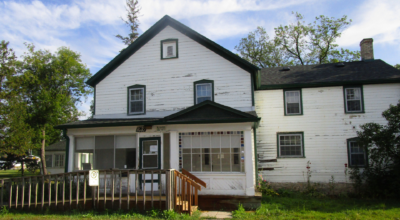
/ News
September 29, 2021
White Paper Released: Heritage in Manitoba 2020
In conjunction with the inaugural Manitoba Heritage Summit 2020, Manitoba’s eight Provincial Heritage Agencies commissioned a report on the state of heritage in Manitoba and its development over the next 10 to 20 years, looking toward a long-term vision for Manitoba’s 200th anniversary in 2070. The resulting white paper, Heritage in Manitoba 2020: Perspectives, Challenges, Opportunities and Recommendations, has now been released.
EXECUTIVE SUMMARY
Purpose
Our goal is to celebrate Manitoba’s heritage activities, raise the profile of heritage in Manitoba, advocate for increased funding for heritage, and to facilitate long term collaborative planning on heritage issues.
The 2020 Heritage Summit
On October 1, 2020, a group of eight Provincial Heritage Agencies (PHAs) hosted the Manitoba Heritage Summit. Presentations covered four topics: economics, financial sustainability, and partnerships; decolonizing heritage in Manitoba; challenges and opportunities for heritage in rural Manitoba; and youth, technology, and green sustainability.
Provincial Heritage Agencies
There are eight PHAs in Manitoba. Taken together they represent the scope of heritage activity in in our province. They are the Jewish Heritage Centre of Western Canada, Heritage Winnipeg, Manitoba Historical Society, Manitoba Archaeological Society, Association for Manitoba Archives, Manitoba Genealogical Society, La Société historique de Saint-Boniface, and Association of Manitoba Museums. Each organization is profiled below.
The Role of the Provincial Government
The Government of Manitoba, through its Historic Resources Branch (HRB), once played a leadership role in heritage preservation. Over recent decades, there has been a sharp decline in the number of staff members who once provided leadership and advice to municipalities and heritage associations. The PHAs have taken over several of the roles once played by the HRB, but lack the resources, under current funding models, to fill the void.
Challenges and Opportunities
Manitoba’s PHAs are facing funding levels that are significantly lower than what was available a decade ago, while obligations, opportunities and expectations have grown. The funding problem is tied closely to issues surrounding the value people place on heritage and the leadership required to define goals and find a way to pay for meeting those goals. We strive to improve our services through better advocacy, embracing diversity, improving our processes for sharing and collaboration. We must focus on innovation and improve the effectiveness of our use of new technologies as part of our effort to expand our audience and improve our connections. The funding deficit makes adopting new technologies especially challenging. Continuity, communications, and expertise are required in terms of leadership. The declining role of the former HRB places stress on all heritage activity.
Recommendations to the Manitoba Government
Our most pressing recommendations relate to funding of PHAs and to the HRB.
1. We call on the Manitoba Government to increase PHA funding to levels resembling what it provided 20 years ago, adjusted for inflation. Funding should be offered on a multi-year basis, at a stable and predictable level, indexed to inflation and reviewed in light of changing expectations. Funding should be adequate to allow each PHA to have a minimum level of paid staff, thus ensuring standards for continuity, expertise, and leadership. Unsustainable and inadequate funding leaves no room for dealing with the unforeseen. The current funding levels, which, when we consider inflation, represent a sharp decrease in actual dollars, tend to sharpen the rural/urban divide. Many organizations have a constant need to be fundraising to simply survive.
2. There has been a significant erosion of HRB services, especially to rural Manitoba. The leadership provided by specialists in building preservation, heritage site commemoration, and heritage site identification should be restored to the levels seen in the 1990s. Alternatively, PHAs need the resources to carry out those roles.












